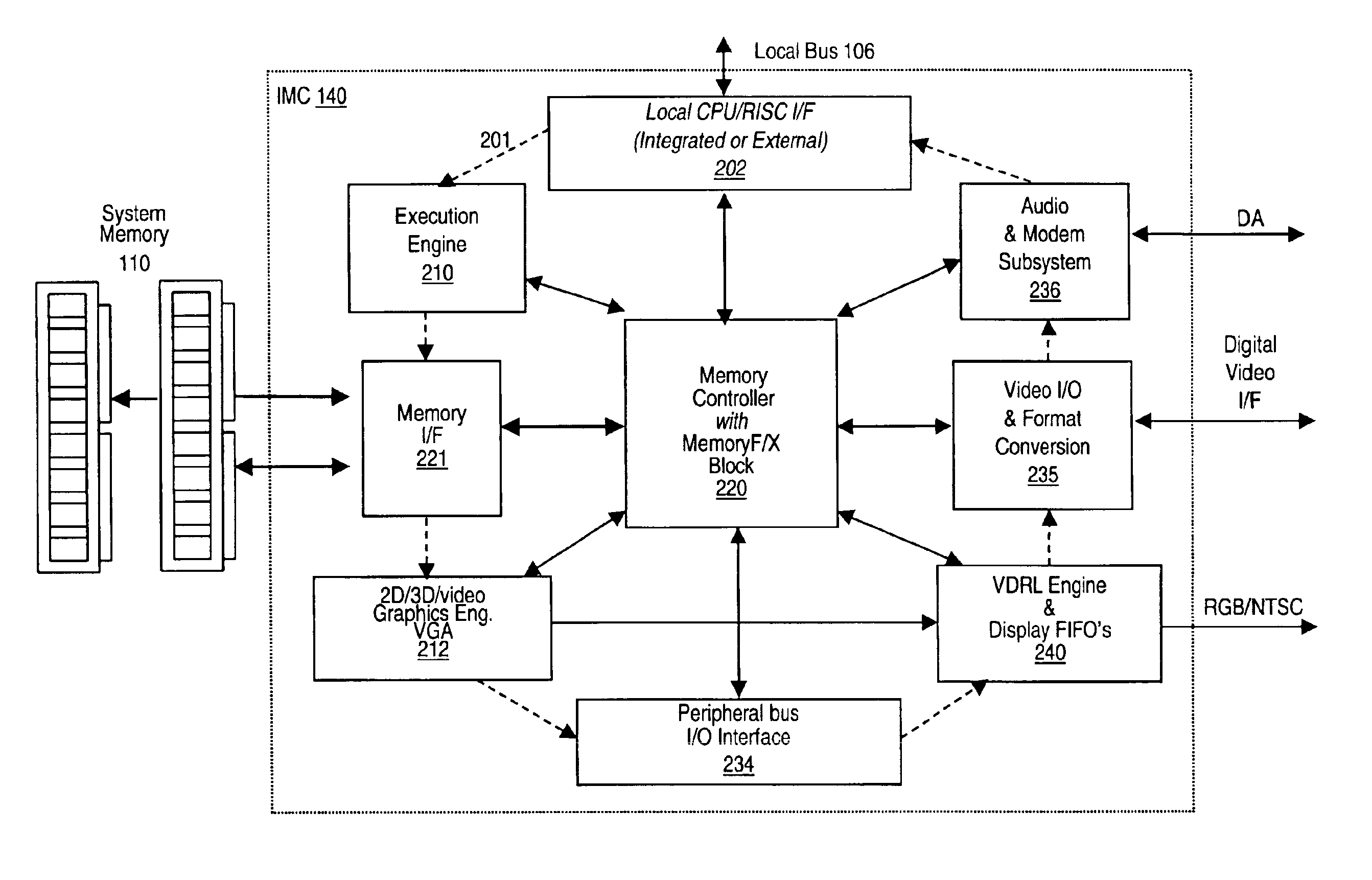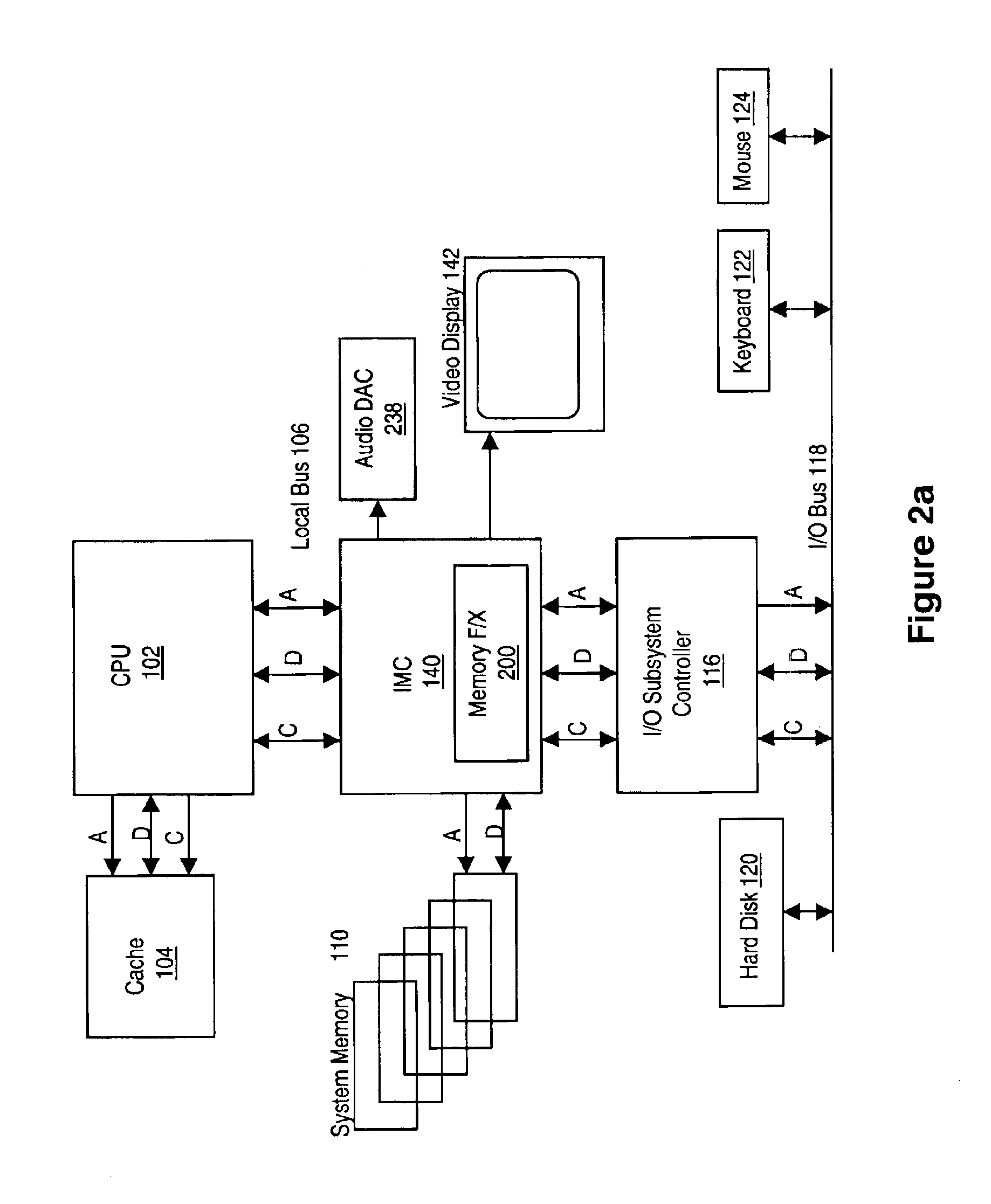Memory module including scalable embedded parallel data compression and decompression engines
a memory module and parallel data technology, applied in the field of computer system and memory module device architecture, can solve the problems of small performance penalty, read and snoop delay, added latency, etc., and achieve the effect of reducing system cost, reducing system bottlenecks, and increasing performan
- Summary
- Abstract
- Description
- Claims
- Application Information
AI Technical Summary
Benefits of technology
Problems solved by technology
Method used
Image
Examples
first embodiment
[0121]In a first embodiment, the present invention comprises a system memory controller, referred to as the Integrated Memory Controller (IMC), which includes the MemoryF / X technology. The IMC is discussed in U.S. patent application Ser. No. 09 / 239,659 titled “Bandwidth Reducing Memory Controller Including Scalable Embedded Parallel Data Compression and Decompression Engines” and filed Jan. 29, 1999, referenced above.
second embodiment
[0122]In a second embodiment, the present invention comprises a memory module that includes the MemoryF / X technology to provide improved data efficiency and bandwidth and reduced storage requirements. The memory module includes a compression / decompression engine, preferably parallel data compression and decompression slices, that are embedded into the memory module. Further, the memory module may not require specialty memory components or system software changes for operation.
third embodiment
[0123]In a third embodiment, the present invention comprises a network device, such as a router, switch, bridge, or hub, which includes the MemoryF / X technology of the present invention. The network device can thus transfer data in the network at increased speeds and / or with reduced bandwidth requirements.
[0124]The MemoryF / X Technology reduces the bandwidth requirements while increasing the memory efficiency for almost all data types within the computer system or network. Thus, conventional standard memory components can achieve higher bandwidth with less system power and noise than when used in conventional systems without the MemoryF / X Technology.
[0125]The technology of the present invention is described below with reference to a computer system architecture, which is one example of the use of the present invention. Thus, FIGS. 1 and 2 illustrate example embodiments, and it is noted that the technology described herein may be included in any of various systems or architectures. Th...
PUM
 Login to View More
Login to View More Abstract
Description
Claims
Application Information
 Login to View More
Login to View More - R&D
- Intellectual Property
- Life Sciences
- Materials
- Tech Scout
- Unparalleled Data Quality
- Higher Quality Content
- 60% Fewer Hallucinations
Browse by: Latest US Patents, China's latest patents, Technical Efficacy Thesaurus, Application Domain, Technology Topic, Popular Technical Reports.
© 2025 PatSnap. All rights reserved.Legal|Privacy policy|Modern Slavery Act Transparency Statement|Sitemap|About US| Contact US: help@patsnap.com



